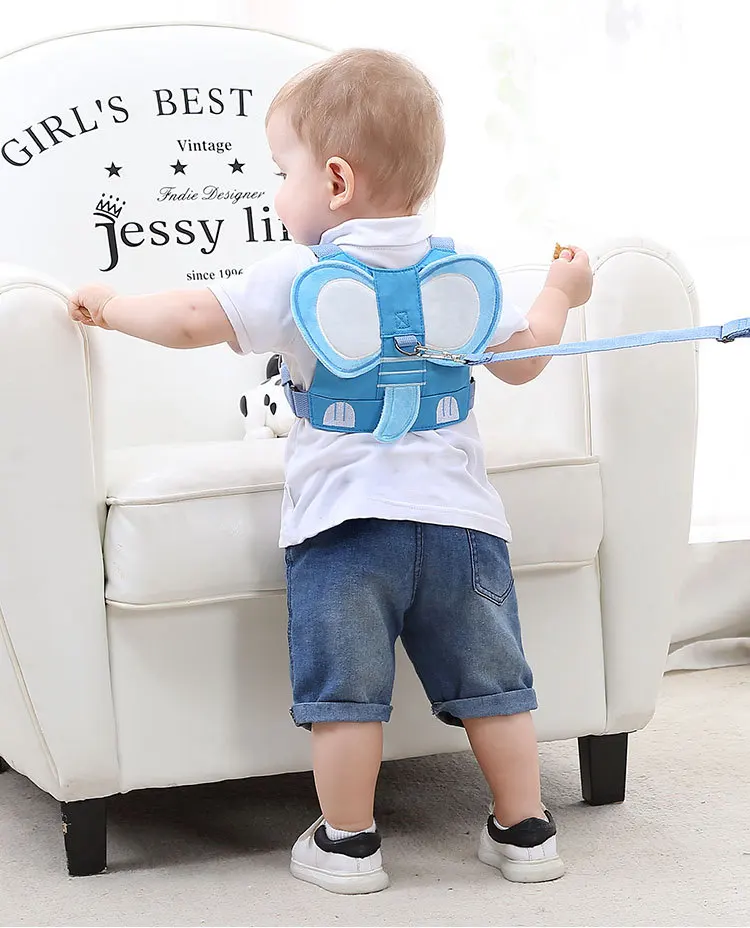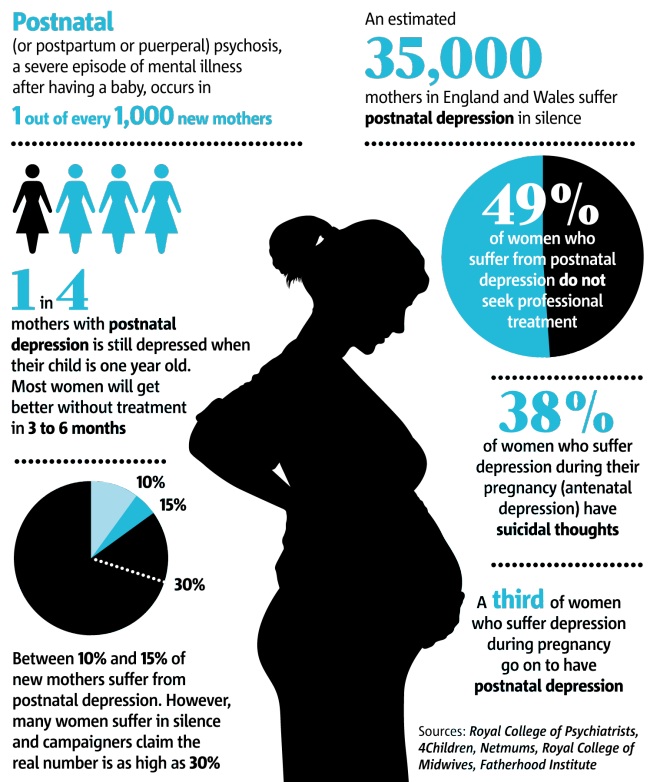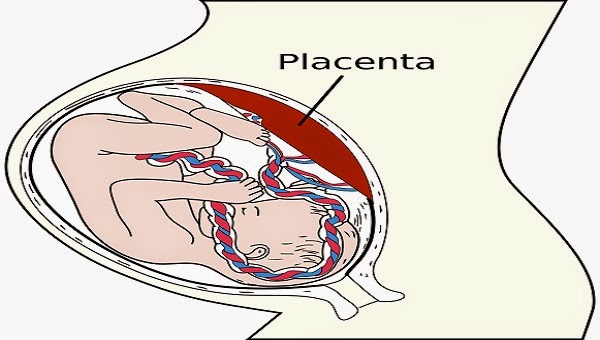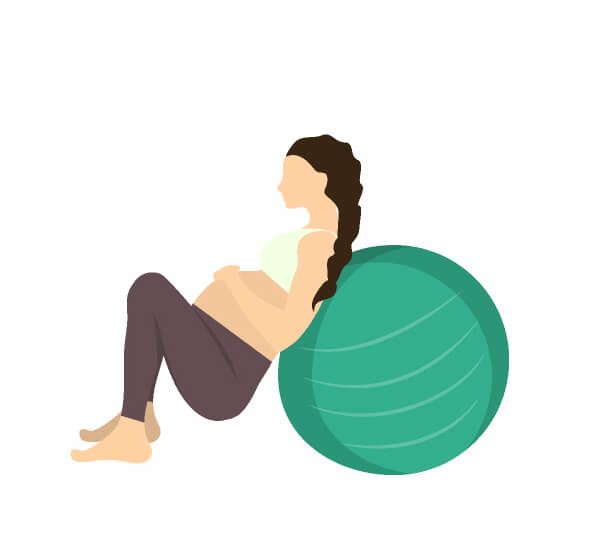How to discipline a child without hitting them
Alternatives to Spanking - NIU
Before delving into this heavy topic I want to say, parenting is hard. Period. It can be a difficult, exhausting and an unappreciative job! It is normal to feel frustrated, angry, upset and sometimes alone as we work through tough parenting decisions. Know that the teachers here do understand all of those parenting related feelings. That’s why I am writing about and presenting this information, to give you alternatives and acknowledge what you do as parents, on a daily basis, isn’t always easy.
In this article I will define and clarify what spanking is; address five reasons not to use spanking; I will share alternatives to spanking, and lastly share tips and pointers to help you during those stressful times.
What is spanking? It is a form of corporal punishment. It includes whoopin’, slapping, grabbing, popping, smacking… handling your child roughly in any way is a form of corporal punishment. FYI - If you hit your child with any object (belt, brush, fly swatter, wooden spoon) it falls under the U. S. definition of abuse. Corporal punishment is the use of physical force with the intention to cause a child to experience pain, but not injury, for the purpose of correction or the control of the child’s behavior. Which leads me to an interesting fact; in the U.S. we are not allowed to perform corporal punishment on any inmate in our correctional system. It is illegal to do so. But, corporal punishment against a child is overlooked time after time. It is socially sanctioned.
So, why should you not spank your child? Here are five points I pulled from a recent seminar I attended at a CAEYC conference presented by Michele Knox Ph.D., Associate Professor of Psychiatry at the University of Toledo, College of Medicine, and Margarita Hernandez, Program Coordinator for Pillars‐Safe From the Start called “I was spanked and I turned out okay.”
- Spanking has limited control. Two out of the five studies that were presented showed decreased compliance. The studies actually supported the fact that children who were guided by parents and caregivers who used firm verbal directives and discipline had a higher level of compliance.
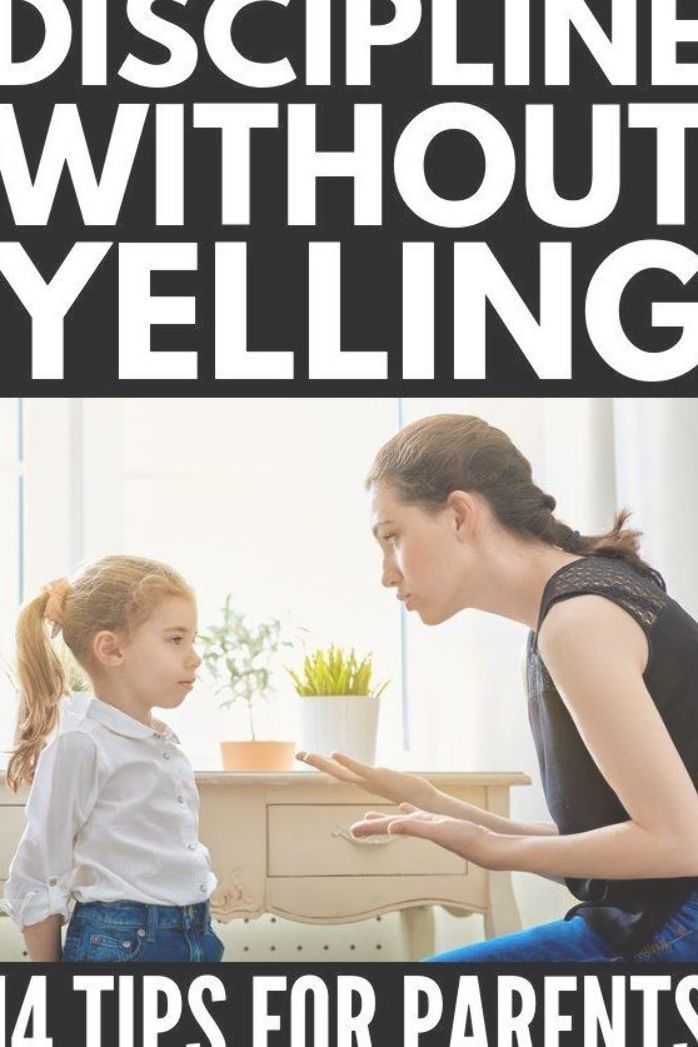 Children who are spanked were found to have a lower moral internalization. That means when parents are away those children are far less likely to make good choices and do what they are supposed to do. Also, most cases of abuse began with socially sanctioned discipline. It’s difficult to show our children how to maintain control over their choices when we are using a form of discipline that leads adults to lose complete control.
Children who are spanked were found to have a lower moral internalization. That means when parents are away those children are far less likely to make good choices and do what they are supposed to do. Also, most cases of abuse began with socially sanctioned discipline. It’s difficult to show our children how to maintain control over their choices when we are using a form of discipline that leads adults to lose complete control. - Children who are spanked are more aggressive. Another result of one of the studies presented at this workshop stated that children who were hit at three years of age were 50% more aggressive at age five. Other findings were as follows:
- delinquent behaviors increased
- there were medium amounts of damage that occurred to the parent/child relationship;
- there was a worsened state of children’s mental health;
- there was an increase in physical abuse towards children;
- increase in adult aggression;
- increase in adult criminal behavior;
- small increased risk of abuse towards their own spouse and/or children.

- Children who are spanked have lower IQs. Children who were re‐directed by using other forms of guidance or discipline were shown to have an IQ score of five points higher than children who were spanked. Why? Corporal punishment or the constant threat of violence is stressful! When individuals are under that amount of stress has a negative effect on brain development. During the act of spanking a child, zero learning can occur.
- What does spanking teach your child? Number one… spanking teaches children that violence is okay. It says that when others aren’t doing what you want them to do hitting them is the solution. When you spank you are teaching your child to be anxious and aggressive. Spanking displays to children that they are not worthy to live with the freedom from violence and aggression like adults are. It was only approximately 50 years ago that beating your wife was socially sanctioned and expected. Now, we as women can fully expect that freedom.
 It was “during the 1960s, the women's liberation movement began drawing attention to violence committed against women, and the battered women's movement began to form.” (Source: http://www.answers.com/topic/domestic‐violence)
It was “during the 1960s, the women's liberation movement began drawing attention to violence committed against women, and the battered women's movement began to form.” (Source: http://www.answers.com/topic/domestic‐violence) - "I was spanked and I turned out okay." You are probably right but stop and think:
- You would have turned out fine even if you weren’t spanked (and your childhood would have been a lot less painful).
- Not all kids who were spanked turned out bad – but why take a chance? Do your best as a parent to ensure your child will have the best future you can offer.
- Back then we didn’t know any better… now we do!
If this article is all about not spanking then we as parents need rational alternatives to spanking, as well as ways to deal with what can be frustrating moments during our parenting journey. So here are some tips, ideas and suggestions. Hopefully you can each find something that works and apply to other parenting strategies!
Ten Alternatives To Spanking By Destry Maycock
(article source: http://www. EzineArticles.com)
EzineArticles.com)
Spanking is only a temporary solution to ongoing problems. Spanking usually leaves a child wondering, "what should I do differently so I don’t get hit again?". Seldom are spankings followed by instruction on what the child needs to do or stop doing. It generally is nothing more than a release of the parent’s frustration directed toward the child. It teaches a child to comply because of fear rather than a sense of what is right or wrong. It teaches children that violence is an acceptable way to solve their problems. Children who are spanked often have a greater risk of low self‐esteem, aggression, lying, cheating, depression and bullying. Spanking sets the example that it is okay to hit when a person is upset or angry.
Below are ten alternatives to spanking that you might find helpful.
- Give choices. A choice gives some control back to the child on the parents’ terms. Parents who are really good at providing choices have children who are more compliant and good at making decisions!
- Take a timeout.
 Yes, you the parent walk away. It is perfectly okay to say. “I’m too upset to deal with you right now; we will talk about this later.”
Yes, you the parent walk away. It is perfectly okay to say. “I’m too upset to deal with you right now; we will talk about this later.” - Get someone else involved. If you feel like your child has got you so angry that you may not be in control, then ask someone else to help you who is not as intimately involved in the situation. This reduces the likelihood that you will strike your child.
- Teach them what you expect. Instead of punishing them for misbehaving, teach them what they can do differently. Tell them, “Next time, please hang your coat up in the closet! How can we help you remember to do this?”
- Recognize their positive behaviors. So, when they hang up that coat tell them how much you appreciate that! Too often parents only notice their children’s misbehaviors and disregard the things they do well.
- Timeout. The general rule is one minute for every year of their age. The setting where the timeout takes place isn’t as important as the fact you are tying the misbehavior to the consequence.
 Try to make it a place that is quiet and the child is unable to get your attention or be unintentionally rewarded. If a child is having a tantrum then their time should start when they have calmed down and can keep it under control for the duration of the timeout.
Try to make it a place that is quiet and the child is unable to get your attention or be unintentionally rewarded. If a child is having a tantrum then their time should start when they have calmed down and can keep it under control for the duration of the timeout. - Consequence. Providing a logical consequence is often very effective. Always tie the consequence back to the misbehavior. “I would like to be able to take you to the store but remember the last time how you ran around the store and wouldn’t listen to me. Well, I am not up for that. You are staying home with _____. Maybe next time you will be able to listen and you can go with me.”
- Pick your battles. Pick the top four things that you just can’t tolerate and focus on disciplining them just for those four behaviors. This lets your child know what is really important to you and you don’t come across as if you are disciplining them for every little infraction.
- Set limits. Instead of telling your children what to do try telling them what you are going to do or allow.
 “I will be happy to take you to your friends when you have finished your chores.”
“I will be happy to take you to your friends when you have finished your chores.” - State your request in the positive. Have you ever noticed how we usually make a request or give directives in the negative? The first thing your child hears… what they can’t have. Just by changing the structure of how you make request will increase your child’s cooperation. Try stating things in the positive by telling them what they can have or what you will allow. They are less likely to argue when you are telling them what they can have or what you will allow.
12 Simple Alternatives to Lashing out at Your Child
- Take a deep breath… and another. Then remember you are the adult.
- Close your eyes and imagine you are hearing what your child is about to hear.
- Press your lips together and count to 10… or 20.
- Put your child in a time‐out chair (one minute for each year of their age).
- Put yourself in a time‐out chair.
 Think about why you are angry; is it your child, or is your child simply a convenient target for your anger?
Think about why you are angry; is it your child, or is your child simply a convenient target for your anger? - Phone a friend.
- If someone can watch the children, go outside and take a walk.
- Take a hot bath or splash cold water on your face.
- Hug a pillow.
- Turn on some music. Maybe even sing along.
- Pick up a pencil and write down as many helpful words as you can think of. Save the list.
- Call 1‐800‐4‐A‐CHILD
Additional and Informative Sites and Resources
- www.zerotothree.org
- www.stophitting.org – provides a lot of religious clarification about spanking.
- Greene, Ross. The Explosive Child
- Barkley, R. The Defiant Child
- Parents Raising Safe Kids, actagainstviolence.org
15 Dicipline Alternatives to Spanking
Reviewed by Renee A. Alli, MD on December 20, 2020
Spanking can bring more issues, like:
- Antisocial behavior
- Aggression
- Injury
- Mental health problems
Plus, critics say it just doesn’t work.
Use positive reinforcement when your kid does something good. Praise works. Kids will look for further approval.
Before your kid messes with the liquor cabinet, lock the door. If the kids are tussling over a toy, take the toy. Many times, changing the surroundings will change behavior. It’ll also squelch the need for more serious punishment.
Bring toys if you’re going somewhere your small child may act out. Take a snack if you think hunger may make them cranky. If sleepiness might bring trouble, think about a nap before you head out. It’s always better to nip the bad behavior before it happens than to try to deal with it in the moment.
You have to have rules. The more everyone understands them -- and what happens if they aren’t followed -- the better off the family will be. Flexibility is OK, especially with older kids. But reasonable rules -- and punishments -- are needed. Think about posting rules and their consequences somewhere in the house. It’ll help with consistency.
If house rules say that your kids must wash their hands before dinner, make sure it’s done every time. Rules don’t work if they’re selectively enforced. Kids need to know that they aren’t changing -- and the consequences of not following them aren’t either.
Everyone needs to know bad behavior comes with consequences. Whether it’s no TV, no cellphone, or more yard work, kids need to know that breaking the rules has a cost. You don’t need to hammer on it. Let the punishments show them. Be firm -- and consistent.
Yes, ignoring bad behavior is an option to spanking. It can work very well, especially with younger kids. With kids craving attention, sometimes no action is the best action. If a hissy fit does no harm -- if it’s just annoying -- some selective deafness can say, “Hey. That’s not gonna work.”
It’s a useful, effective tool. A good rule is a minute for each year of your child’s age. They should keep quiet in a corner or chair. Don’t interact with the kid while they're in the pokey. That’s a big part of the punishment. When it’s over, other than maybe an apology from the child, that’s it. Don’t bring it up again.
That’s a big part of the punishment. When it’s over, other than maybe an apology from the child, that’s it. Don’t bring it up again.
If you’re about to blow your top, don’t. Hand off to another adult. Call a friend. Count to 10. Take a bath. Take enough time to get calm so you know what to do next time. Humor can break the tension, too.
A good way to set a misbehaving kid straight is to turn their attention elsewhere and distract them. They want a toy someone else has? Look at this cool toy! If they’re grabbing or hitting, it might take a trip outside or to another room.
When the kids act out, it’s up to you to be the adult. That means control the urge to hit. Be calm. Be cool. Avoid the lifelong problems spanking can bring your child by staying under control.
A Stanford study showed that middle school teachers who took an “empathetic mind-set” toward wayward students gave half as many suspensions as those who didn’t. That can work at home, too. Talk to your misbehaving kid calmly, clearly, and with understanding.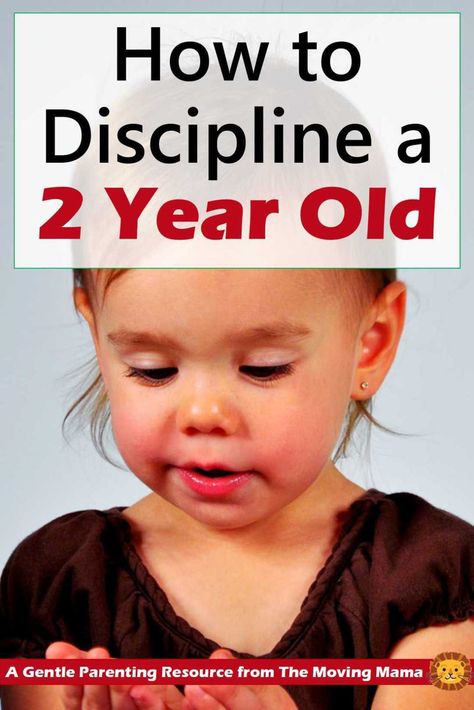
Kids misbehave. They’re kids. And good parents discipline them for it. But the give-and-take doesn’t have to be negative. Use it as a teaching moment to promote good behavior. After all is said and done, a little hug shows kids they’re still loved.
When you’re disciplining, be clear. Look your child in the eye. Be calm and measured. Tell the kid what to do (“Eat your spinach”) not what NOT to do (“Don’t play with your spinach”). If they still misbehave, explain the consequences. Follow through swiftly and consistently, too.
Especially with older children, being flexible enough to negotiate discipline and punishments can help everyone. Involving kids in making decisions adds to their moral judgment. It won’t work with an angry toddler, though.
IMAGES PROVIDED BY:
1) Getty
2) Thinkstock
3) Thinkstock
4) Getty
5) Thinkstock
6) Thinkstock
7) Getty
8) Getty
9) Getty
10) Thinkstock
11) Getty
12) Thinkstock
13) Getty
14) Getty
15) Thinkstock
SOURCES:
American Psychological Association: “The case against spanking. ”
”
Gershoff, E. Child Development Perspectives, July 2013.
American Academy of Pediatrics, Committee on Psychosocial Aspects of Child and Family Health. Pediatrics, April 1998.
Emory University School of Medicine: “Alternatives to Physical Punishment.”
ChildrensMD.org: “Beyond time-outs: No-yell, no-spank discipline.”
Virginia Cooperative Extension (Virginia Tech, Virginia State University): “Discipline for Young Children - To Prevent Misbehavior.”
Crary, E. Without Spanking or Spoiling: A Practical Approach to Toddler and Preschool Guidance, Parenting Press Inc., 1993.
National Association of School Psychologists: “Spanking: Alternative Discipline Strategies.”
North Carolina Division of Social Services, North Carolina Family and Children’s Resource Program (fosteringperspectives.org): “Parenting Without Spanking.”
Prevent Child Abuse America: “Spanking: When we know more, we can do better.”
University of Minnesota Extension: “Controlling Your Own Anger. ”
”
University of Rochester Medical Center: “Anger Management: Strategies for Parents and Grandparents.”
Mental Health America of Wisconsin: “Effective Discipline Techniques for Parents: Alternatives to Spanking.”
Stanford University: “Teacher empathy reduces student suspensions, Stanford research shows.”
University of Rochester Medical Center: “How to Discipline Your Child With Love.”
Reid, JB. Development and Psychopathology, January 1993.
© 2020 WebMD, LLC. All rights reserved. View privacy policy and trust info
How to punish a child without harm to his psyche? |
Raising a mature person without ever punishing a child is a utopia. Punishment is a necessary process of education, psychologists say. But what is the right way to punish?
A child whose parents beat him for the slightest infraction, threaten to hand him over to an evil uncle, force him to stand in a corner for hours or arrange silent boycotts, as a rule, is doomed to an unhappy childhood.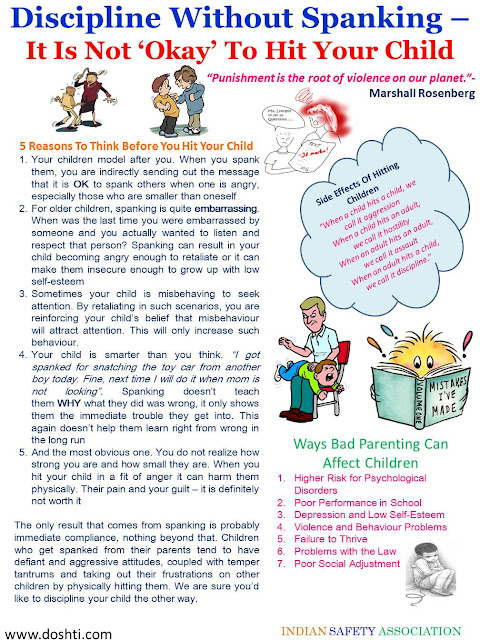 Such a baby will almost certainly suffer from low self-esteem, distrust of the world, the feeling that he is superfluous and unloved.
Such a baby will almost certainly suffer from low self-esteem, distrust of the world, the feeling that he is superfluous and unloved.
Why don't children obey?
In order to understand what is possible and what is not, the child needs to test the strength of the boundaries surrounding him, in particular the limits of parental authority and patience ?
Children whose parents are inconsistent in their demands especially often explore the boundaries of what is permitted. It also happens differently. Sometimes the child behaves as if he set out to “get” his parents. Often, rebellious behavior is a bungled attempt to get attention. If the baby lacks parental warmth and involvement, bad behavior may be the only way to evoke a brightly colored emotional reaction from mom or dad.
Artificial toys make children uncontrollable
Another reason for children's disobedience is nervous tension. Children today are overwhelmed with an abundance of information. These are all kinds of early development circles, and aggressive cartoons (computer games).
These are all kinds of early development circles, and aggressive cartoons (computer games).
Raising and punishing a child: each age has its own approach
Not always soft exhortations and explanations lead to the desired result. Sometimes only through punishment a child can learn certain rules and norms of behavior.
“An important nuance: punishment is a consequence of breaking a rule that the child knew about in advance. It is important that the parental reaction is adequate to the offense and the age of the child.
For example, until the moment when the baby does not begin to say “I” about himself (usually this happens at 2-2.5 years), he does not correlate the punishment with his personality. Of course, this does not mean that the baby should be allowed to fight and pinch. But punishing a two-year-old child for this simply does not make sense. Stop the child's hand, gently switch his attention to something else.
“Up to about five years of age, a child's actions are, first of all, imitation. ”
”
How to punish a child without harm to his psyche: important rules
The purpose of punishment is to help the child understand himself and the current situation and, if possible, avoid repeating the mistakes made in the future. In order for the punishment to have just such an effect, it is necessary, regardless of the age of the child, to follow a number of rules.
- Cold head... When you punish your son or daughter, you shouldn't seethe emotions in yourself.
…and a warm heart. In the Slavic tradition, there has long been a rule: when punishing their children with rods, parents mentally placed their heart filled with love in front of the baby. And despite all the non-pedagogical spanking, the children perceived such punishment as fair. In no case do we urge you to use physical measures of influence.
- Ask yourself a couple of questions. Why am I doing this? From impotence? Fatigue? Annoyance with your husband? The second test: imagine that in the place of your son or daughter: a) someone else's child; b) a significant adult for you - a husband, mother or girlfriend; c) you yourself.
 Would you allow yourself to do what you are going to do in this case?
Would you allow yourself to do what you are going to do in this case? - An act, not a person. Criticize bad behavior, not the child. Say: "I am punishing you for calling other children bad names." The child should know why he is being punished
- Time frame. It is important that the child knows how long the punishment will last. The wording “you won’t get more sweets” or “from now on you won’t watch cartoons” is absolutely unacceptable! The kid may decide that the ban applies to his entire future life - you must admit, this is too harsh and also unrealistic. And then, when after some time you forget about what happened and you yourself treat the baby with a treat or turn on his favorite cartoon, your parental authority in his eyes may be shaken.
- Ritual of reconciliation. Develop some kind of symbolic action that will mark the end of the sentence. It can be, for example, a nursery rhyme: “Peace, make peace, make peace and don’t fight anymore!” By the way, it is not without reason that children, reconciled, weave their little fingers: on the little finger there are biologically active points that are directly connected with the heart!
Forbidden tricks: how not to punish a child
There are taboos in matters of punishment. Whatever the misconduct of the child, in no case do not allow yourself to humiliate or intimidate the baby. It is unacceptable to deprive the baby of satisfaction of his physiological (today you go to bed without dinner) and emotional (I am not talking to you now) needs. Ignoring is generally perhaps the most terrible form of punishment for a child. In this case, the parent seems to be sending the child a message: “You don’t exist for me, you have no place in my life.” You can’t threaten a child: “If you behave badly, I’ll give you to a woman” (the baby perceives this as “I don’t need you”).
Whatever the misconduct of the child, in no case do not allow yourself to humiliate or intimidate the baby. It is unacceptable to deprive the baby of satisfaction of his physiological (today you go to bed without dinner) and emotional (I am not talking to you now) needs. Ignoring is generally perhaps the most terrible form of punishment for a child. In this case, the parent seems to be sending the child a message: “You don’t exist for me, you have no place in my life.” You can’t threaten a child: “If you behave badly, I’ll give you to a woman” (the baby perceives this as “I don’t need you”).
Punish without witnesses
It is better to punish your little one in private. Firstly, it does not injure the self-esteem of the baby. And secondly, if one child is punished in the presence of another, then the little one who is watching what is happening also suffers. He receives an even greater charge of aggression than the guilty one, to whom educational sanctions are applied. Of course, this will affect his psycho-emotional state.
Of course, this will affect his psycho-emotional state.
Conduct and punishment: playing by the rules
It is always better to reach an agreement in advance than to “resolve” an already existing conflict. In order for peace and harmony to always reign in the family, it is necessary to establish certain rules of conduct.
- Minimum bans. There shouldn't be too many restrictions. They should concern only those moments that are really important for you in the behavior of children (wash your hands before eating, make your bed in the morning, say hello, do not pick your nose, etc.).
- Uniform standards. It is important that you and your husband have the same requirements for a child. And be prepared to hold the boundaries of what is permitted and apply sanctions if they are violated.
- One rule for all. The rules must be followed by all family members. You can’t demand from a child that he doesn’t eat in front of the TV if you and your husband do it.

- Creative approach. Together with your child, draw “reminders” on sheets of paper regarding the most important rules. For example, you can draw a cup with legs heading towards the sink and hang this drawing above the dining table. After eating, it will be enough for you to point to the poster - and the baby will remember that you should take the dirty dishes to the sink.
- Flexible system. The rules should be reviewed and adjusted from time to time, because they are not designed to control your life, but to make it easier and more enjoyable!
How to properly punish a child: 10 important rules
One of the eternal questions of parents, a cause for anxiety and worry, heated discussions and disputes - should children be punished or not? And if yes, then how to do it right, so as not to harm the unstable child's psyche? And if you do not punish, then where is the guarantee that the child will not grow up as a spoiled egoist, ready at any moment to sit on the neck of kind-hearted parents and turn into a real tormentor? About this "Oh!" said family psychotherapist and clinical psychologist Maria Merolaeva.
Maria Merolaeva, clinical psychologist, family psychotherapist
Some parents believe that a child is a source of sins and vices, it is necessary to punish him, using physical force, not sparing, otherwise nothing good will grow out of him. As a rule, they defend their position by saying that “we were beaten in childhood, and we grew up to be good people”, citing as an example those who grew up “not very”, which means, most likely, “they beat us a little”. The meaning of such a model of education is to subordinate the will of the child to himself, "so that he does not do stupid things."
The other extreme is avoiding any punishment, justifying it by saying that the child is “small, he just doesn’t understand what he is doing, he doesn’t do it on purpose, you just need to be able to negotiate with him” and so on. Thus, parents, without noticing it themselves, remove responsibility from their child. This model has become widespread in connection with the growth of the "value of the child" and denies the very idea of \u200b\u200bthe family hierarchy.
In fact, neither the first nor the second option is allowed. It is impossible to use physical and moral violence (to threaten, not to talk, blackmail, shout) to a child in any case. Of course, there are cases when a parent, under the influence of emotions, loses control and can spank or raise his voice, but deliberately making a child suffer means not leaving him a chance to develop such feelings as compassion, regret, not giving him the opportunity to realize that he is important and expensive.
Most often, parents leave the child completely unpunished, who are afraid of offending him, harming him, perhaps giving in to children's tantrums and anger, trying by any means to minimize their manifestations, or in the case of pedagogical neglect, when there is simply no strength to educate and it is easier to be allowed to do whatever you want than to try to change the behavior of the baby.
To figure out how to punish a child in a way that makes sense, you need to understand what punishment is, what is its purpose? What do we as parents want to achieve by punishing our children?
Etymologically, the word "punishment" comes from the verb "to show" - that is, to instruct, show. Then it is logical that "punishment" is something that we use to direct the child on the right path, to outline for him the boundaries of what is permitted. As a rule, when punishing, we want the best for our children - so that they understand what is good and what is bad, grow up as "real", "worthy" people, do not make irreparable mistakes in their lives, become better than us.
Then it is logical that "punishment" is something that we use to direct the child on the right path, to outline for him the boundaries of what is permitted. As a rule, when punishing, we want the best for our children - so that they understand what is good and what is bad, grow up as "real", "worthy" people, do not make irreparable mistakes in their lives, become better than us.
Then the next question is: what should be the punishment for the child to really realize that he did wrong, learn from what happened and learn from the experience? Will we achieve these lofty goals by raising a child with the help of carrots and sticks? Of course not. The only thing we can teach with such methods is to be afraid of punishments and parents, to try to earn encouragement, rewards - and all this without really thinking about what happened.
In order for punishment to be useful, and not just a way to relieve an upset, tired, helpless parent, the following rules must be observed:
-
The main rule stems from the basic need that every child has - the need for affection.
 A parent for a child is, first of all, a source of protection, children need the care of a strong and responsible adult who is a priori higher and dominates, but not in order to subjugate and oppress, but in order to help and protect. When a secure attachment is formed, a very close bond is established between the child and the parent, which greatly simplifies the interaction and makes the baby obedient. When punishing a child, it is important to maintain a respectful attitude towards him.
A parent for a child is, first of all, a source of protection, children need the care of a strong and responsible adult who is a priori higher and dominates, but not in order to subjugate and oppress, but in order to help and protect. When a secure attachment is formed, a very close bond is established between the child and the parent, which greatly simplifies the interaction and makes the baby obedient. When punishing a child, it is important to maintain a respectful attitude towards him. -
In order for the lesson to be learned, the child, first of all, must understand, realize where he is wrong, feel the consequences of his misconduct. And these consequences are not the belt or the cry of an angry parent, not the deprivation of sweets or the prohibition to leave the house. It is something that follows directly from what has been done. For example, if you were late home and didn’t call, it means that you don’t know how to plan your time and it’s too early for you to go out in the evenings with friends.
 You scream and cry on the playground or in the store - I'm very sorry, but it spoils my mood so much that now I don't want to continue the walk anymore and we will have to return home. If you didn’t do your homework on time, then you have to do it before going to bed instead of a cartoon or evening reading. If you offended someone and did not apologize, then they will no longer want to play with you. The essence of this method is that for every action the child receives a response from life itself. This helps him gain an orientation in how the world works. It is this tactic that teaches children to anticipate the consequences of their actions in the future, to feel regret for what turned out badly.
You scream and cry on the playground or in the store - I'm very sorry, but it spoils my mood so much that now I don't want to continue the walk anymore and we will have to return home. If you didn’t do your homework on time, then you have to do it before going to bed instead of a cartoon or evening reading. If you offended someone and did not apologize, then they will no longer want to play with you. The essence of this method is that for every action the child receives a response from life itself. This helps him gain an orientation in how the world works. It is this tactic that teaches children to anticipate the consequences of their actions in the future, to feel regret for what turned out badly. -
Under no circumstances should a child have doubts that his parents love him for who he is. He must understand that he will be accepted regardless of his actions. That is why when punishing, it is important to focus on the offense, and not on the personality characteristics of the child.
 If, for example, a kid, while playing with food, spills soup, you should not tell him that he is a "blunder" - just explain why his act is bad and offer him a cleaning rag to consolidate the experience gained.
If, for example, a kid, while playing with food, spills soup, you should not tell him that he is a "blunder" - just explain why his act is bad and offer him a cleaning rag to consolidate the experience gained. -
When punishing a child, you should focus on staying in an adult position. If at the moment of a conversation with a child the parent feels irritation or despair, this means that he has been knocked out of the position of an adult. This often happens when children's tears, whims and tantrums awaken the inner child in us - then we become helpless. In this case, you should ask yourself the question "How old am I now?", step aside, cool down a bit and only after that return to the conversation. For example, in a situation where a child refuses to turn off the TV, but a large number of cartoons is definitely not good for him, a mother from an adult position can say this: “I'm sorry, but I can't let you watch the second cartoon, because if you watch two in a row, then you have a tantrum, and everyone’s mood deteriorates.
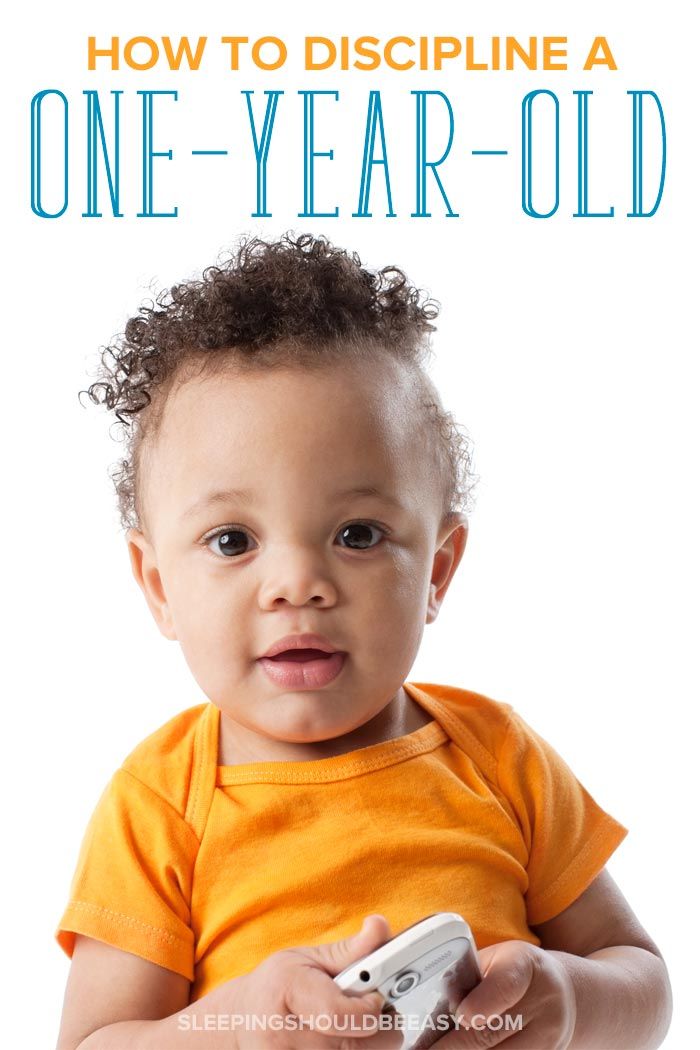 ”
” -
Be consistent, consistent and predictable in your demands and responses. This means that within the family there must be some unified concept of what is possible, what is not, what is good and what is bad. The child must be initiated into the nuances of this concept and firmly know what he can be punished for. At the same time, the way the parents react should not depend on the mood, the weather outside the window and the time of year. For example, if a mother in a good mood asks a child to turn off the TV, and he starts to act up and does not turn it off, she, smiling, allows him to continue. But in the same situation, if the mother is in a bad mood, she starts to quarrel, scream, and most likely will punish the baby. In this state of affairs, the child is simply not able to learn what he can and cannot do.
-
It is very important to use so-called “temporary” language, rather than permanent language, when talking to a child about bad behavior. For example, “You just broke a toy, now you have to play without it for a while” instead of saying “You always break everything! I will never buy you toys again.
 ” Using words such as “never, never, to anyone,” you risk not fulfilling this promise and losing trust.
” Using words such as “never, never, to anyone,” you risk not fulfilling this promise and losing trust. -
Punishment should be age-appropriate. It is useless to try to explain something and give lectures to a two-year-old kid, because he is simply not able to learn what you are telling him about and cannot concentrate voluntary attention for more than five minutes. In the same way, it does not make sense as a punishment to forbid a teenager to eat sweets.
-
Punishment must be just and proportionate to the seriousness of the act.
-
In no case should you frighten and intimidate a child - this is a sure way to teach him to lie and get out.
-
Always, under any circumstances, remember the greatest value that we have - the emotional connection with the child. After all, if you think about it, it becomes obvious that not a single spoiled sofa or a bad mark at school, an extra 30 minutes at the computer or a lost phone is worth breaking this connection, darkening the image of the inner parent that each of us hears somewhere in soul when it needs protection, support, love and acceptance.





